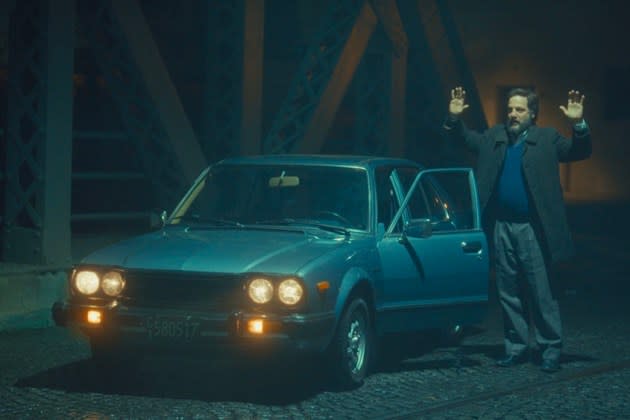‘The Rescue’ Review: A Robust Argentinian Showcase for ‘Money Heist’ Star Rodrigo de la Serna

In cinematic terms, regime change lends itself to a full stop or climax. It’s often used by filmmakers as a conclusion. Revolution is typically portrayed as the final act that the struggle has been building toward, as the old ways are swept aside in favor of a new and presumably glorious future. Stickier and typically more difficult to dramatize is the long, slow “what now?,” where a country begins the process of building new systems.
“The Rescue,” from writer-director Daniela Goggi, is set during the 1980s, after the reintroduction of democracy to Argentina, following the collapse of the military junta which ruled the country with an iron first after the 1976 coup against Isabel Perón. In “The Rescue,” the old regime has notionally been dispersed, but in practice, rooting out corruption and renewing a governance culture rife with human rights abuses is very much an ongoing work in progress.
More from Variety
'City of Wind' Review: Modern and Ancient Mongolia Meet in a Striking, Poignant Youth Drama
Ava DuVernay Beams as 'Origin' Gets Near 6-Minute Standing Ovation at Venice
Goggi’s film explores this context from a personal worst-case perspective, adapting and fictionalizing the memoir “El Salto de Papá” by Martín Sivak, a bestseller in Argentina. The screen version concerns two middle-aged and fairly well-connected brothers, Julio (Rodrigo de la Serna) and Miguel Levy (Germán Palacios). When Miguel is kidnapped by persons unknown, Julio and the rest of his family promptly pay the hefty ransom demanded, but unfortunately this is only the beginning of their woes. With Miguel still missing, they are referred to various government officials who will supposedly be able to help, for a price, and it isn’t long before disturbing similarities between the new government and old regime begin to make themselves felt.
The role of Julio is a neat showcase for de la Serna, a face probably most familiar to international audiences from his role as fan favorite Martín Berrote in the Netflix series “Money Heist.” He appears in agreeably rumpled form here, the effects of longterm stress weighing on the character visibly as his brother’s disappearance stretches into Day 2, Day 45, Day 304 and so on (this grim count appears on screen, orienting us in the prolonged nature of the crisis without the need for clunky expositional dialogue).
De la Serna is supported by Andrea Garrote (who co-wrote the screenplay with Goggi) as missing brother Miguel’s wife, and a couple of bright-as-buttons kids who remind us that these kinds of incidents weren’t distant historical events, but the lived childhoods of many people now in their forties and fifties.
While the narrative pacing realistically reflects the agonizing sense of slow-motion stress experienced by the characters involved, the wardrobe, camera and lighting play around with a couple of counterintuitive creative gambits. While the first half of the film is laden with blue hues — blue clothes, blue lighting, blue grade — somewhere around the midpoint, the palette shifts into an exploration of yellow, orange and brown and the interplay between these tones. But what at first feels like an optimistic shift soon curdles, revealed as a false dawn of optimism, mirroring the way in which the family’s hopes for Miguel are toyed with throughout their ordeal.
A sober and serious look at a sober and serious subject, “The Rescue” will play well for audiences familiar with the political context, while providing an undeniably sharp showcase for de la Serna.
Best of Variety
Sign up for Variety’s Newsletter. For the latest news, follow us on Facebook, Twitter, and Instagram.

